Me-262 and the perspective of the Third Reich fighter jets
Introduction
At VO, a discussion arose between Oleg Kaptsov and Roman Skomorokhov around the Me-262 fighter:
https://topwar.ru/160645-reaktivnyj-istrebitel-me262-pozor-i-degradacija-ljuftvaffe.html
https://topwar.ru/160894-o-vodoizmeschenii-istrebitelja-me-262.html
https://topwar.ru/161022-me262-luchshee-oruzhie-u-pobeditelej.html
The respected authors were joined by no less respected Ilya Legat:
https://topwar.ru/161022-me262-luchshee-oruzhie-u-pobeditelej.html
Basically the discussion came down to the following questions:
1. Was ME-262 a breakthrough or a dead end?
2. Was the Me-262 competitive with the reactive first-borns of other warring powers?
3. How to evaluate the combat effectiveness of the Me-262?
We leave to the authors' conscience the legitimacy and quality of their arguments and facts. Anyone who wishes to easily find the Me-262 on the basis of the test results by specialists from the USA, England or the USSR can easily find it on the net directly, and at the same time make their own opinion on the above issues.
Trophy Report Translation
It’s interesting for me personally how the Germans themselves evaluated Schwalbe, what they expected from her and what prospects they saw for her. In this aspect, one document that recently caught my eye was unexpectedly interesting. This is a translation of the trophy report on the meeting comparing He-11TL fighter jet projects (as translated):
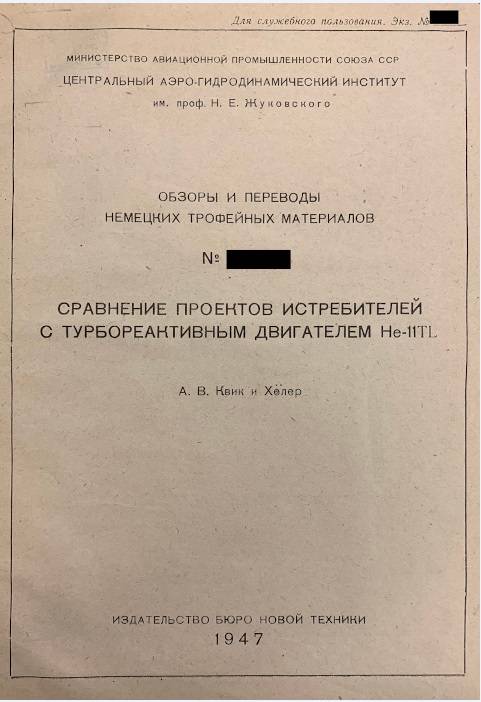
Unfortunately, the translation does not have accurate data on the date of the meeting, venue and composition of participants, but from the context it can be understood that this is the beginning of the 1945 year, and the participants were of a rather high degree of competence, based on the level and detail of the problems discussed.
The meeting considered the projects of the following aircraft (as translated):
1. Firms "Junkers".
2. Firms Blom and Foss (212).
3. Firms Blom and Foss (209). (Suspended from discussion at the request of the firm.)
4. Fokke-Wulf firms (I).
5. Fokke-Wulf firms (II).
6. Firms Messerschmitt (I).
7. Firms Messerschmitt (II). (The company has not decided on the project, the question is being decided on the choice of the scheme.)
8. Heinkel firms (Xe-162). (Further development was suspended, the company introduced a new tailless project that cannot be evaluated.)
As noted in the report, all projects have undergone changes since the previous meeting (which means that meetings on these projects were regular. - Approx. Auth.). The results of the changes are given in the tables, which I have summarized in one:
The estimated maximum speeds in the report are indicated by the general for all aircraft within 960-990 ± 40 km / h.
The report contains a company code for only one project. The Messerschmitt project (II) is indicated as P 1110, which allows you to identify the engine for which the projects were developed. This is Heinkel HES 011, or Heinkel - Hirth 109-011, information about which is quite a lot on the network:
The engine and the project comments mentioned in the report make it possible to identify the brand names of some other projects with a sufficient degree of probability:
1. Junkers Firms - Junkers EF 128.
2. Firms "Blom and Voss" (212) - Blohm & Voss P 212.
3. Firms Blom and Foss (209). (Suspended from discussion at the request of the firm.)
4. Focke-Wulf Firms (I) - Focke-Wulf Ta 183.
5. Fokke-Wulf (II) firms -?
6. Firms Messerschmitt (I) -?
I will speak about comments on these projects later. As for the general problems mentioned in the report, the following can be said.
The sweep used to achieve high speeds entails problems with stalling and worsening of the ailerons, including due to the draining of the flow to the ends of the wing, there is no solution at the time of the meeting, difficulties are foreseen during the implementation of projects and the need for large experimental work in wind tunnels and on location.
The necessity of increasing the stiffness of the swept wing to ensure the effectiveness of ailerons at high speeds is noted (the effect of reverse ailerons was already familiar to those who were attending. - Approx. Auth.).
The necessity of using a course machine to ensure stability when firing on airplanes with swept wings is discussed.
It is noted that at the speeds at which wave drag occurs, the area of the swept wing weakly affects the overall resistance of the aircraft, therefore, it is necessary to proceed from providing landing characteristics and the possibility of increasing the mass of aircraft with further modernization, choosing the load on the wing.
A narrow possible range of centerings for the tailless scheme is noted, which limits the possibilities for further modernization.
Due to high speeds, questions arise regarding weathervane stability, which will be affected by the achievable rigidity of the fuselage, and problems are foreseen in this area.
Now we turn to the issues discussed on specific projects.
Junkers EF 128
Concerning this project, it was noted that at high flight speeds, early occurrence of shock waves at the air intakes is possible, therefore, their location is unsuccessful, plumage can reduce the sweep effect, and draining the flow from the wing will reduce the effectiveness of the rudder. Low location weapons makes it difficult to conduct continuous aimed fire. The large length of the connected tanks can significantly disrupt the longitudinal static stability.
Blohm & Voss P 212
Due to the large masses at the end of the wing, the latter is supposed to be unsafe for flutter. This project, as noted, especially refers to general comments on wing stiffness.
Focke-Wulf Ta 183
A premature wave crisis will occur in the root sections of the horizontal tail, and the elastic characteristics of the tail should be given special attention in connection with issues of stability and controllability. The longitudinal stability of the fuselage gives rise to questions of longitudinal stability. The tail unit is dangerous when forced to leave the aircraft. The following positive qualities of the project were noted: low wing load compared to other projects and a good view of the pilot.
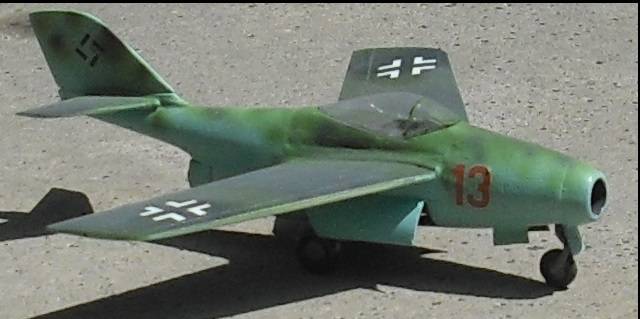
Messerschmitt (I)
The main questions for the project concerned the V-plumage, the wave crisis on it, transverse moments and issues of stability. Marked as poor qualities: poor visibility, high wing loading and insufficient longitudinal stability. The project required, according to the consultants, large additional experimental studies on V-plumage.
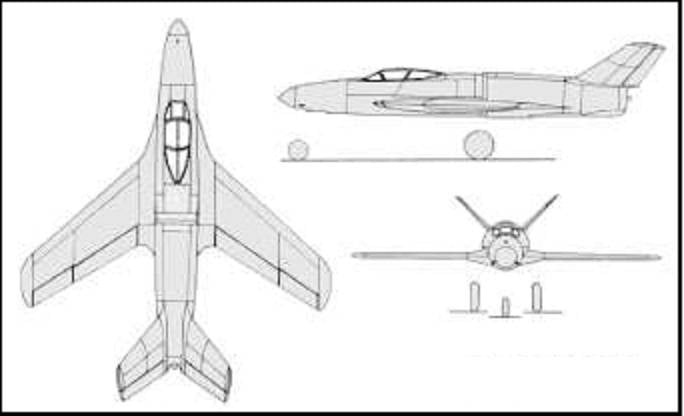
What conclusions regarding the Me-262 and its assessment by the Germans themselves can be drawn from this report, which would seem to be unrelated to Schwalbe?
Conclusions
1. In Germany, intensive work was underway on jet fighters, apparently realizing that the modernization potential of the Me-262 was low.
2. Me-262 allowed the Germans to get acquainted in practice with all the charms of the wave crisis, which they were very worried about, ways to solve problems were sought, since Me-262 provided a rich experimental base, but these paths have not yet been definitively determined.
3. The Germans understood that making two single-engine fighters was more profitable than one twin-engine fighter.
4. Promising projects were developed not under YuMO-004 or BMW-003, but under the engine with 1500-2000 kgs thrust. But YuMO and BMW gave invaluable experience in production and operation.
5. Me-262 was the basis that allowed the Germans to meaningfully move forward in the development of an effective fighter jet. Another question is that neither time nor resources story did not leave them.
In general, the Germans themselves realized that the Me-262 is a test of the pen, not all decisions made in it are optimal, the life cycle of this aircraft will be short-lived. Therefore, such meetings were held and reports were written on their results.
The above illustrations of the appearance of the projects, possibly not at 100%, correspond to the true content of the projects at that time. But they give a general idea of the essence of the issues raised.

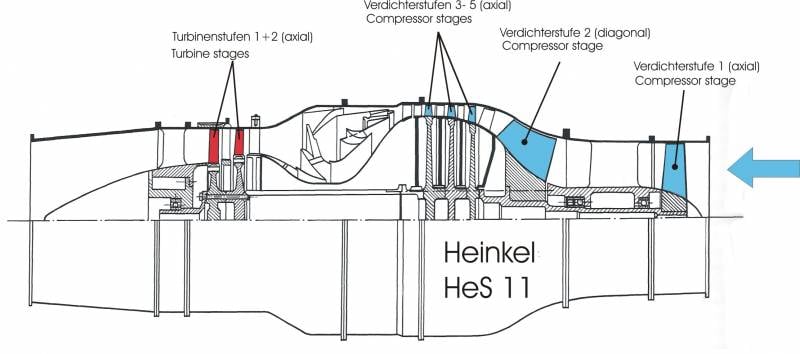
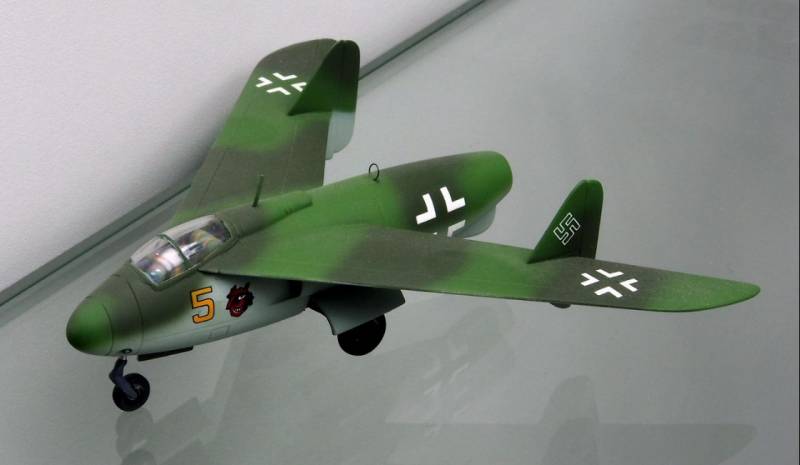
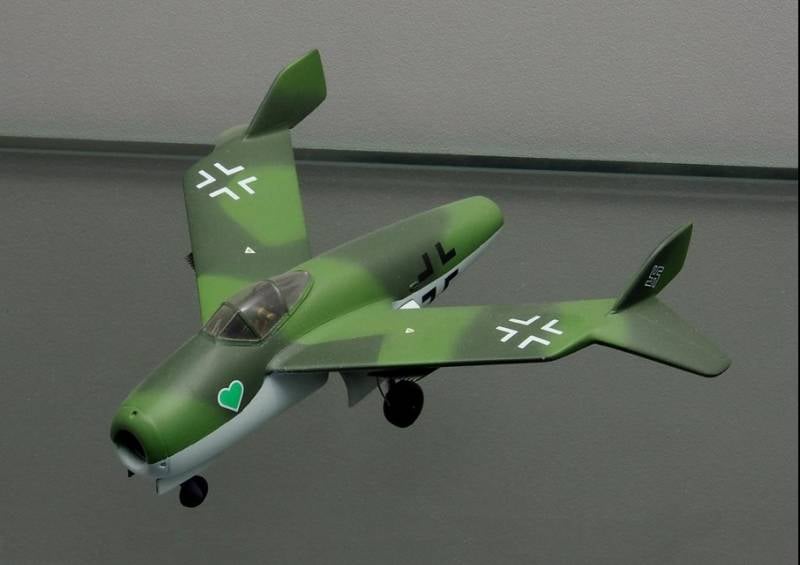
Information